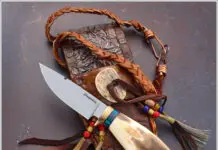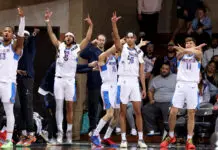You don’t just find a great home; you create one. It’s the details – and the meaning behind those details – that turn a house into a home. When it came to designing their home, Darwin and Linda James decided to infuse their love of travel into every inch of the space.
Over the course of a year, Tulsa designer Charles Faudree and the Jameses would meet once a week to plan out every detail of the couple’s new residence.
The result is a masterfully crafted and beautifully detailed two-level French chateau that Faudree called a designer’s dream project.
A definitive authority on Country French design, Faudree has authored a number of design books on the topic.
“Darwin and Linda are Francophiles,” Faudree says of his clients, who enjoy all the beauty that France has to offer in the way of art and, especially, design.
The couple takes an annual trip to their favorite home away from home, which is also part of how they created such an authentic French chateau feel by bringing materials straight from the source.
The impressive iron chandelier that is featured in the breakfast nook was found in France, and sitting chairs with animal print fabric in the living room were a find Linda made herself while on a trip to Paris. This love of all things French and a careful eye for detail are part of the deliberate selection process for each and every piece in the home. From the detailed, natural limestone fireplace to the antique Majolica dinner service in the breakfast nook, everything is custom-fitted and tailor-made for the owners’ lifestyle and preferences.
Antique beams, featured in nearly every area of the home, help complete the authentic chateau feeling.
The color palette of the home pulls from traditional Country French hues such as green, blue and white. From the natural color of the stone walls to the aqua shade in the master suite, the feel is cozy and calming – just the way a chateau should feel, according to Faudree.
Antique terra cotta flooring imported from France anchors the kitchen, which features custom cabinetry from David Hollingsworth. Additional custom work in the kitchen includes the granite center table and the limestone-tiled hood over the range. Details like adding an animal print to the chair backs add a fun element to the space.
In the living room, the custom design work of the fireplace is accented by the lush fabrics and French art that envelope the room. Over the years, the owners have amassed an extensive collection of art from their home away from home, and this space was designed with that in mind.
The master suite features an exquisite array of chandeliers, such as in the master bath, wood beam ceilings and a lush mix of fabrics.
Part of the beauty of this style is the blending of beautiful patterns and rich colors that Faudree mixed with delight, and which include many patterns from Faudree’s own fabric line for Vervain. Along with draperies, the home features a selection of lavish rugs from Haas and Matt Cameron. The room evokes a no-fuss elegance that is all at once welcoming and eye-catching.
A sumptuous outdoor living area complete with covered dining and sitting spaces features an ornate chandelier of iron and horns created by Dale Gillman. The authentic space is equipped to entertain as well as relax and is outfitted with large French doors for access into the main living areas inside the house.
Faudree credits the exquisite chateau to a collaborative effort of a great team of people from builder to architect.
“It takes the creative effort of a committed group to create a home like this,” the designer says.























